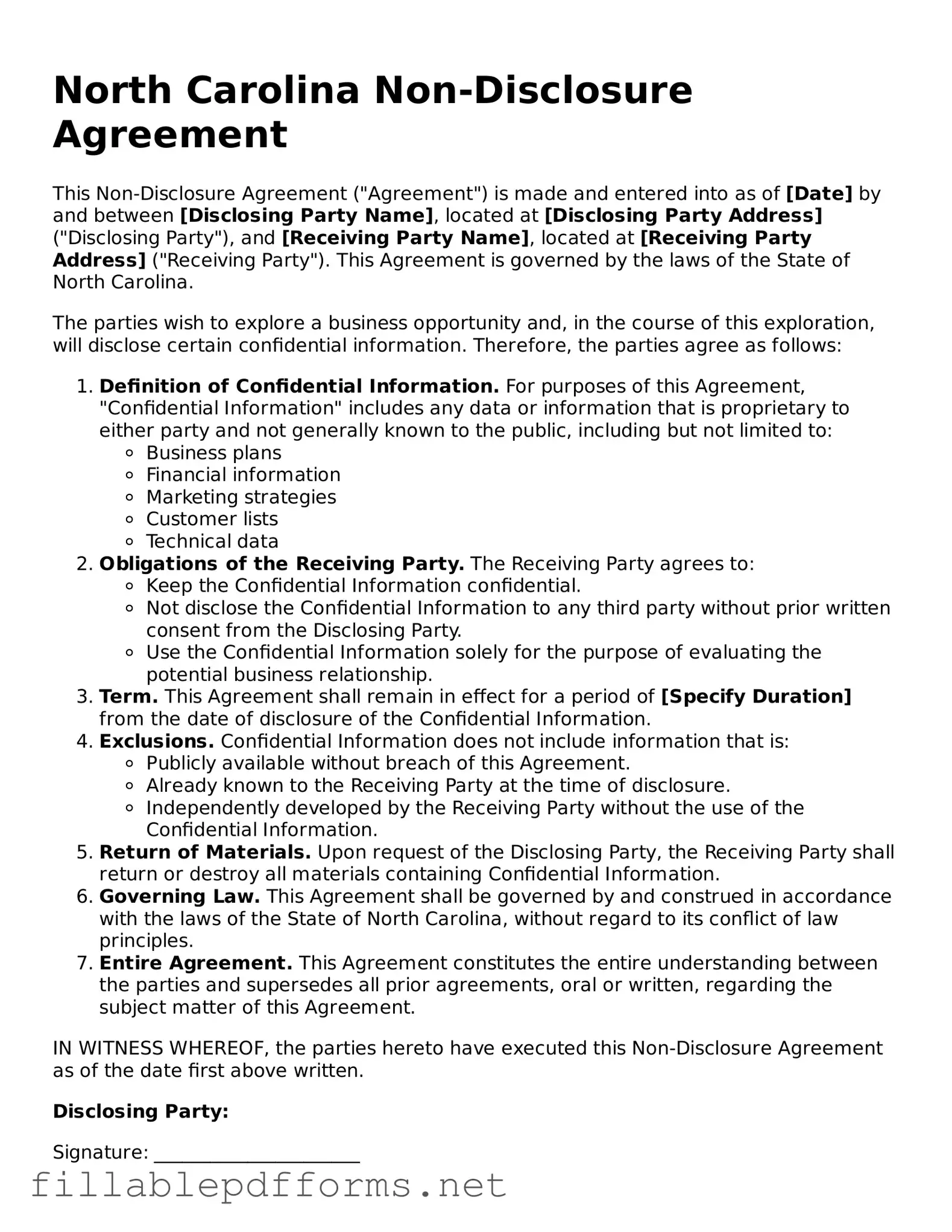Attorney-Verified Non-disclosure Agreement Form for North Carolina State
A North Carolina Non-disclosure Agreement (NDA) is a legal document designed to protect confidential information shared between parties. This form establishes the terms under which sensitive data can be disclosed and ensures that the receiving party does not disclose this information to unauthorized individuals. By using an NDA, businesses and individuals can safeguard their proprietary information and trade secrets.
Launch Editor Here
